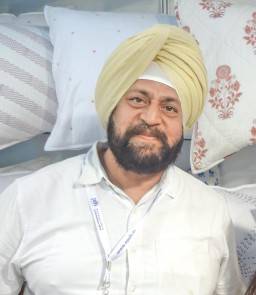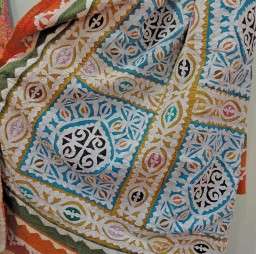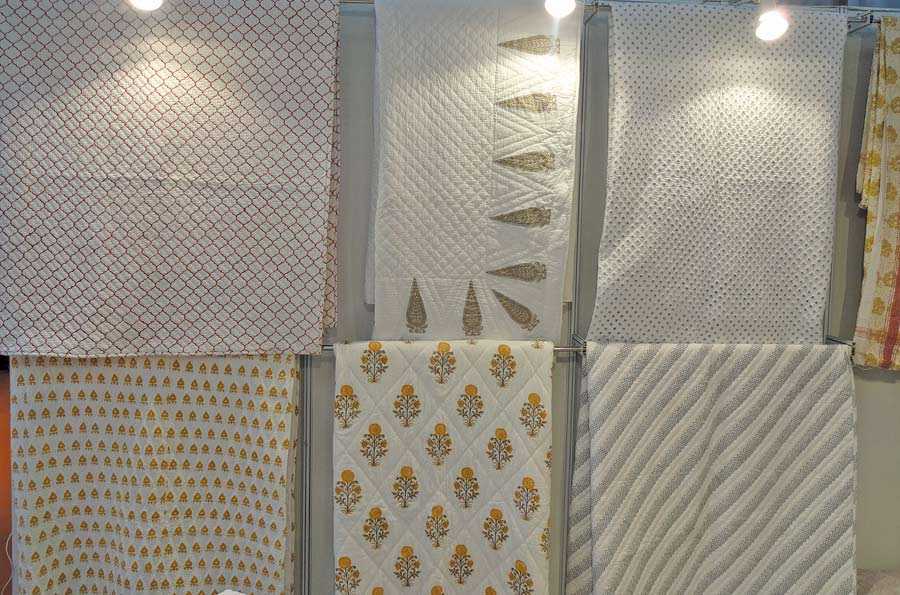
Quilts, for ages, have evoked passion and praise for their intricate patterns, aesthetic designs and the distinct regional flavour. They have transcended the line of being a functional product used in winter for warmth and with the advent of machines in quilting, the segment has grown immensely over the years. While China is the biggest player in the machine-made quilts, India has retained its position in the hand-made and value-added quilt market. To get an insight of the existing scenario and their perspective on it, Apparel Online caught up with some of the midlevel exporters in quilts.
Slow market conditions in Europe and increasing demand for blankets have not really impacted the market for quilts, and though most exporters are not sure about the reasons, they feel that consumers are using both blankets as well as quilts as lifestyle products, rather than as commodity products to fulfil certain need. Also the hand-made/ hand-feel factor is something which is keeping quilts moving even in the slowdown. At Better Living, quilts account for 60 to 70 per cent of the company’s production and they cater to the high-end market where hand-made patterns and quality matters a lot. According to Paramjeet Singh, Partner, Better Living, certain pockets in the Delhi-NCR region where there’s no dearth of quality workers are emerging as new areas of importance as far as hand-made quilts are concerned, which earlier was the monopoly of Rudrapur, a town in Uttarakhand.

“I can say with confidence that despite tough market conditions, quilt business is growing for India, and why would it not, with so much of variety, vibrancy and uniqueness emerging from different regions of the country,” reasons Paramjeet. The company which is also planning to foray into the domestic market is coming up with a range of AC quilts, “which are very much in demand now,” he claims.
Indian exporters have lots of variety in the hand-made segment and they are continuously increasing their offering, especially to overcome the impact of China’s dominance in machine quilts. As usual, use of cotton base is also supporting them. Mohit Dubey, Director, Jaitex Exports, Noida says, “There are some buyers who procure hand-made quilts from us and machine-made from China. On probing, we found that quilts offered by China are in the range of maximum US $ 9 or 10, a price we would not be able to offer, and not anything below US $ 25. Hence in quilts,we are focusing on the hand-made variety only, which have rich and complicated designs, not possible for China to copy. This creative edge also gives opportunity to attract customers by offering something very different. Our quilts start from US $ 30 and goes up to US $ 50-60.” Monika Aggarwal, Proprietor of SRC Creations, Delhi is using a combination of machine and hand together for uniqueness. “70 per cent of quilts are made with high density stitches which require mending by hand after machine completes it work. These kinds of quilts range between US $ 25-40 while purely hand-made quilts have FOB of US $ 35 to 40. This segment has seen good growth from our buyers in the US, as well as in Europe.” Having capacity of 4,000 quilts per month, SRC Creations is enjoying 30 per cent growth in this category and expecting same in future also.

Talking about quilts from India is never complete without mentioning Jaipur which is the traditional hub of hand-made quilts and is still enjoying its uniqueness with growth. “Quilt business is growing from Jaipur, and China can’t copy these traditional handwork patterns exactly and in toto… Buyers still don’t have much options, besides Jaipur, as far as handmade quilts are concerned,” observes Chandra Kant of Shakti Exim, Jaipur, whose company is planning to cater to consumers in USA, Taiwan and Japan, where clients are ready to pay a premium for unique, traditional hand-made quilts. More than 80 per cent of its products are hand-made, be it embroidery or traditional kantha work. However, to tide over the issue of dwindling number of expert hands, Shakti Exim has resorted to paying its workers handsomely too.
However, another section of exporters are of the belief that despite its traditional uniqueness, India does not really hold much sway over China in the hand-made section more so when China’s machine-made quilts are being able to replicate many of the traditional Indian designs. They strongly feel that China today is capable enough of giving most of the things on machines that India could boast of as its strength, like the Bagru print of Jaipur.
Also, for most of the buyers, rather than the exact feel and balance of the look, it is the price that matters, which obviously comes down when produced by machines. For another section of exporters, the determining factor is the complexity of designs that matter the most for a prospective buyer. As of now in the US, mainly indigo, Mughal and pigment print colours are in demand with velvet fabric, they feel. As to size, it’s the usual 60-90 and 90-108 inches and thread count of 92/104 that are preferred more and are in vogue.

Post a Comment